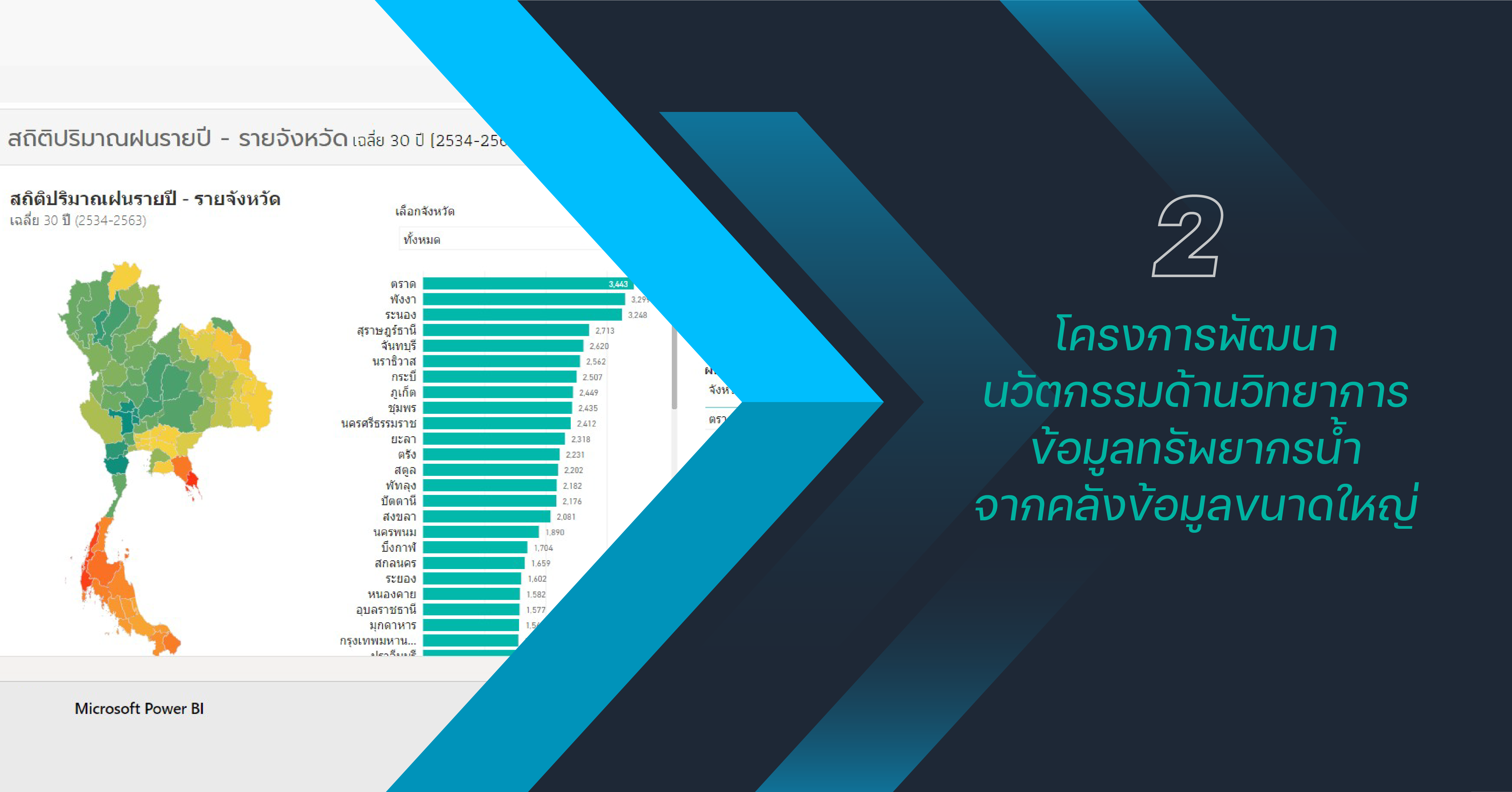
2021: Project to Upgrade the Mobile Mapping System to Support Monitoring and Analysis of Water Situations - Phase 4
08/02/2024
This project focuses on enhancing the Mobile Mapping System (MMS) technology, developed by the Hydro-Informatics Institute (HII). Since 2012, MMS has been designed for surveying and collecting geographical data, particularly water-related geographic analyses and mapping. This data serves as a critical foundation within the National Hydroinformatics Data Center, necessitating regular upgrades to ensure its relevance and readiness to address evolving situations.
Currently, additional equipment has been developed for integration between the Mobile Mapping System (MMS) and the Unmanned Aerial Vehicles (UAVs) for surveys in areas inaccessible to MMS-equipped vehicles. The comprehensive MMS system significantly enhances data accuracy, achieving a fourfold increase in precision with an impressive 10-centimeter accuracy level. This system ensures the acquisition of up-to-date and precise geographical data, closely mirroring real topographical conditions while facilitating rapid data processing. Coupled with Global Navigation Satellite System (GNSS) receivers for accurate location identification, the current MMS can efficiently receive signals from multiple satellites, resulting in enhanced precision and detail in geographical survey data.

The continuous development of the Mobile Mapping System (MMS) technology has empowered the Hydro-Informatics Institute (HII) to efficiently support specialized operations across diverse terrains. Enhancing technology enables more accurate and precise analyses and predictions, incorporating various models. It responds effectively to data needs in both normal and emergency situations, seamlessly integrating with the National Hydroinformatics Data Center for efficient planning, management, and informed decision-making. This advancement contributes to accurate and suitable spatial planning, e.g. determining suitable areas for water storage during drought seasons and guiding water discharge routes. Additionally, it aids in identifying appropriate evacuation areas, reducing potential damage to life, property, and the country’s economic and social systems. In the year 2024, the operational initiatives encompassed the following:
Enhancing the capabilities of the Mobile Mapping System (MMS)
HII has undertaken efforts to enhance the capabilities of the Mobile Mapping System (MMS) by developing and improving mounting plates to ensure compatibility with the survey vehicles. These plates enable comprehensive equipment attachment, control the directional movement of surveying tools and vehicles, and integrate various types of surveying equipment for improved collaboration. Furthermore, efficiency has been increased in the control system, providing a unified display of survey data from aerial, terrestrial, and aquatic sources.

Development the capabilities of the Online Processing System
The development aims to effectively manage data from various sensors and handle large volumes of real-time data entering the storage and display system. This system ensures the ability to monitor the status and quality of data transmission during operations. The improved efficiency of the system allows for the processing of large quantities and increased data sizes in a timely manner, reducing data processing time. Additionally, it increases the system’s capability to store large-sized data appropriately, enabling easy retrieval and utilization of geographical survey data from the MMS system at any time through the website https://mms.hii.or.th/publication/publish.

Results of Geographical Survey in 2021:
Geographical survey to solve embankment erosion caused by sediment, collaborating with the Department of Fisheries, Kasetsart University (June 2021)
Hydro-Informatics Institute (HII) and the Department of Fisheries, Kasetsart University, utilized the Mobile Mapping System (MMS) to survey the surrounding areas of large reservoirs in front of the Faculty of Fisheries. The survey involved two main components:
• MMS Survey using an MMS-equipped vehicle: This aimed to create a three-dimensional terrain model.
• USV (Unmanned Surface Vehicle) Survey: Utilizing an autonomous surface vehicle to generate a three-dimensional model of the water reservoir and measure water levels.
By combining data from both components, a highly accurate three-dimensional terrain model with an accuracy of ±4 centimeters were produced. The collected information, including reservoir capacity and cross-sectional profiles, provides insights into the surrounding terrain and reservoir capacity. These data are invaluable for analyzing and planning effective management strategies for the Fisheries Department’s surrounding areas. The survey results are always accessible through the website, facilitating continuous monitoring and decision-making.

Survey of the Provincial Water Management Network Co-ordination Center in the Southern Region (November – December 2021)
The Hydro-Informatics Institute (HII) collaborates with the Provincial Water Management Network Co-ordination Center in the Southern Region, Provincial Water Resources Committee and Disaster Prevention and Mitigation (Region 11) in Surat Thani Province, to support the water management center in the southern region to monitor, evaluate, and analyze the water situation and facilitate the coordination of various agencies in the area. The focus is on managing water during the rainy season in the southern region, ensuring a rapid response to return the situation to normal. All agencies can utilize information from the water management center to plan diverse water management strategies, effectively addressing and mitigating flood-related issues. HII deployed the MMS for operational support in monitoring and analyzing the situation in the affected areas. The activities encompassed 2 main missions:
• Comprehensive Survey of the Southern Disaster-Prone Area (November 21 – December 3, 2021):
1) MMS Survey: Covered a total distance of 951 kilometers across 4 districts.
2) UAV Survey: Utilized Unmanned Aerial Vehicles (UAV) for aerial surveys, covering a total area of 83 square kilometers.
3) GNSS Survey: Conducted water level measurements and surveyed levels at 7 telemetry stations using GNSS technology.

• Flood Disaster Area Survey in Chumphon Province (November 12-14, 2021): Following the flood event on Asia Route 41, HII expedited a survey on November 21, 2021, using MMS vehicles. The survey focused on assessing water levels and conditions along Asia Route 41 to create a high-precision 3D map, and the collected data was then compared with water level readings from telemetry stations, referencing Mean Sea Level (MSL). This information was crucial in responding to the flooding event that occurred again at Chumphon Province on December 1, 2021.
The utilization of survey data by the Hydro-Informatics Institute (HII) enabled the Provincial Water Management Network Co-ordination Center in the Southern Region to promptly send water level alerts from the Swi River, which overflowed and inundated Asia Route 41. This timely response significantly contributed to minimizing loss of life and property damage for the residents.



